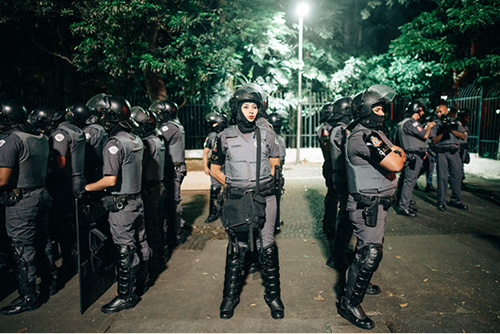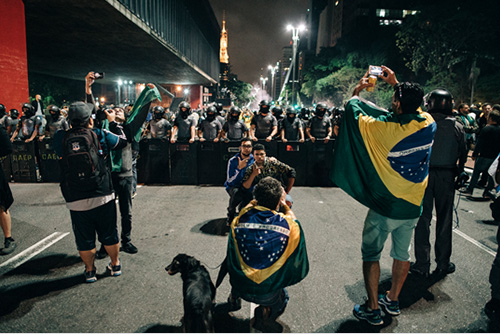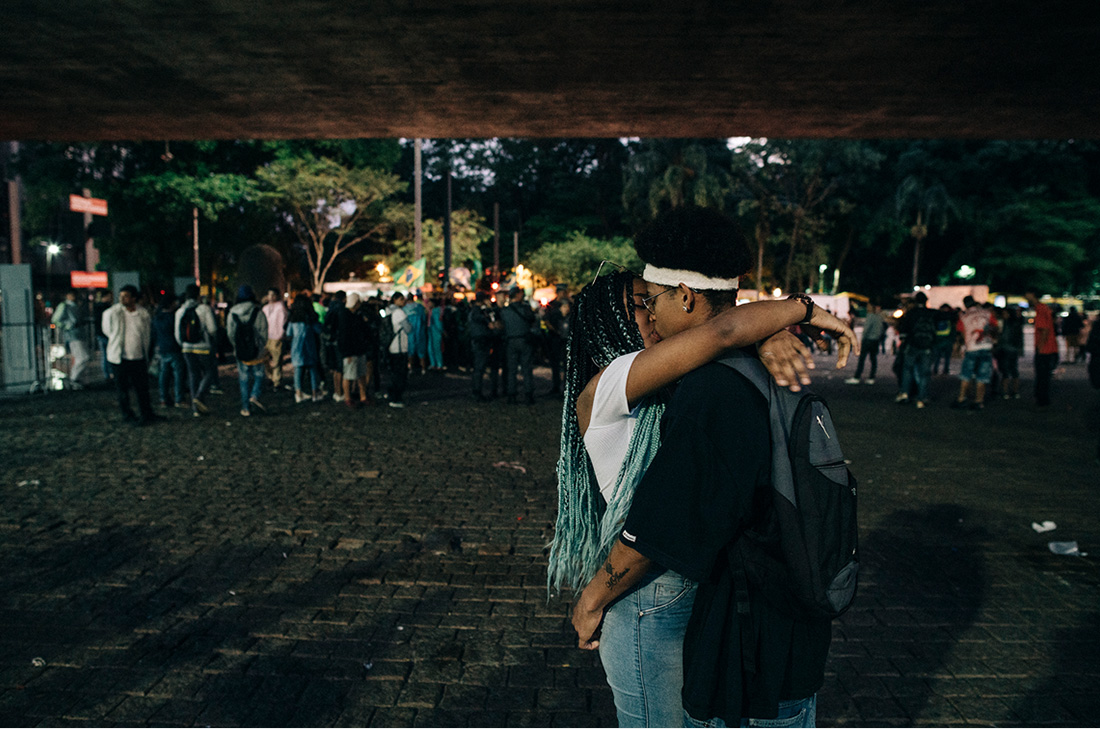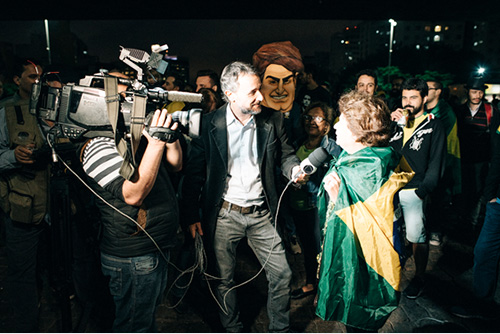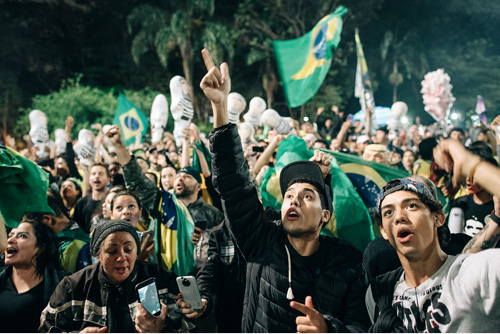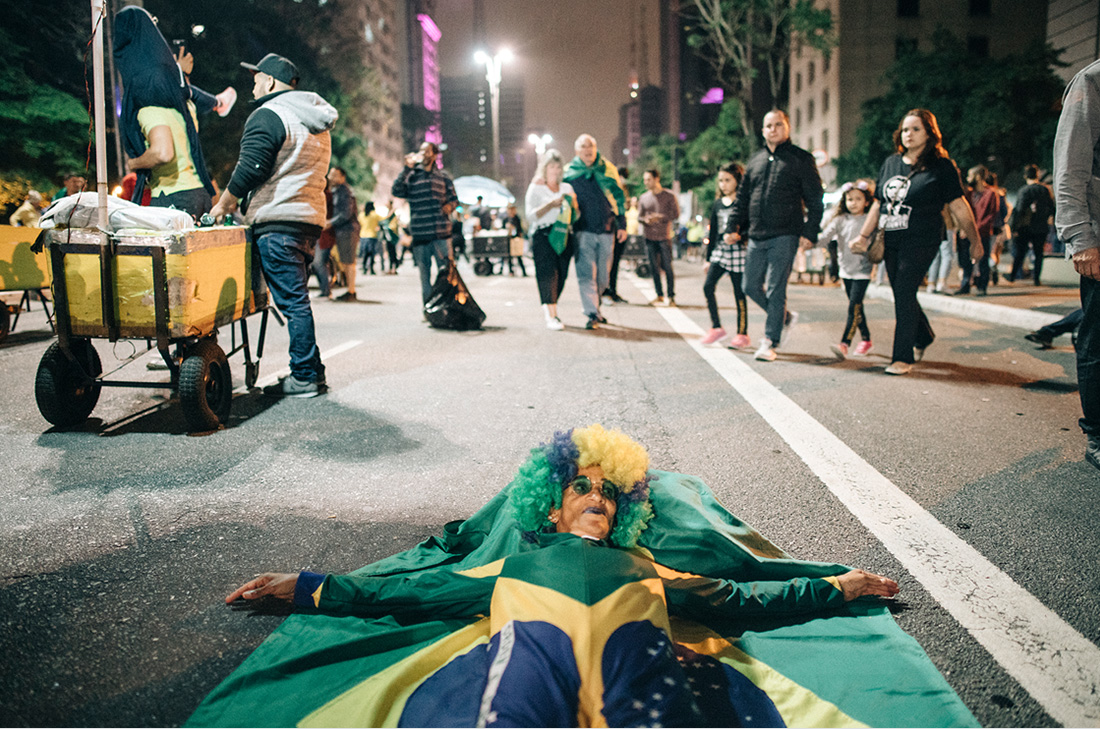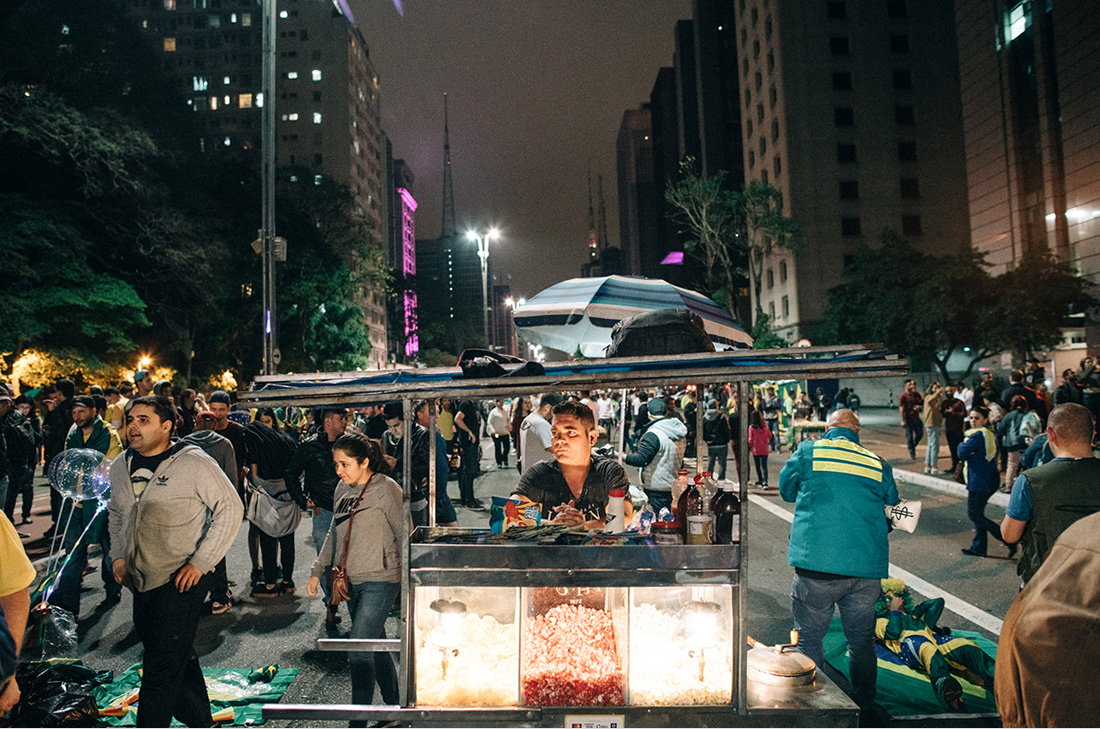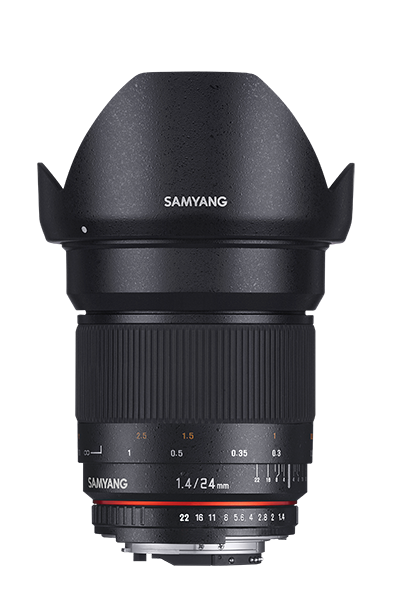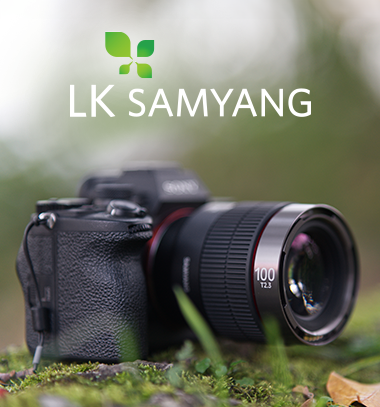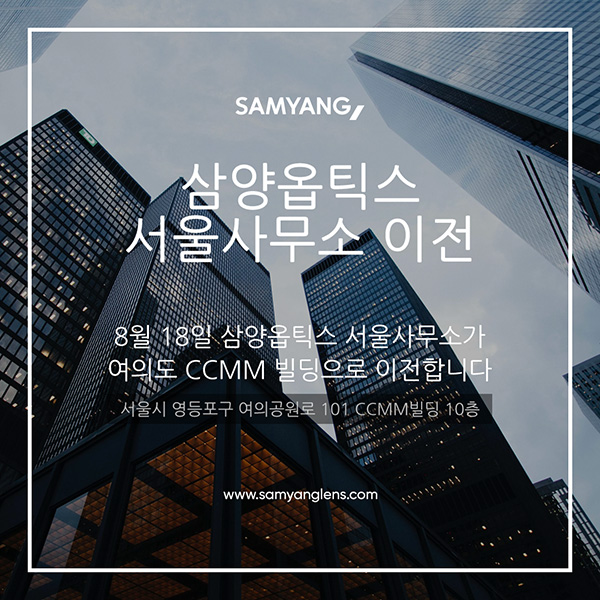BLOG
Captured the historical moment in Brazil
I'm a documentary photographer
focusing on storytelling with an immersive approach.
I'm based in Paris but I move around a lot. I also enjoy street photography whenever I’m travelling somewhere. The street is the best introduction to
exploring a new culture. It’s more about feeling than understanding. Whenever I’m shooting in the street, I prioritize easy to use and discreet equipment.
The Samyang 24mm takes me back to the time I started photography using a wide angle. The fact that this lens is all manual focus didn’t bother me at all.
I was never a big fan of AF anyway. I think it’s much more interesting to miss out on pictures, as in a way it gives more value to the one you succeed with.
In my opinion, photography is not so much about getting all of your photos sharp, it’s more about getting the right picture.
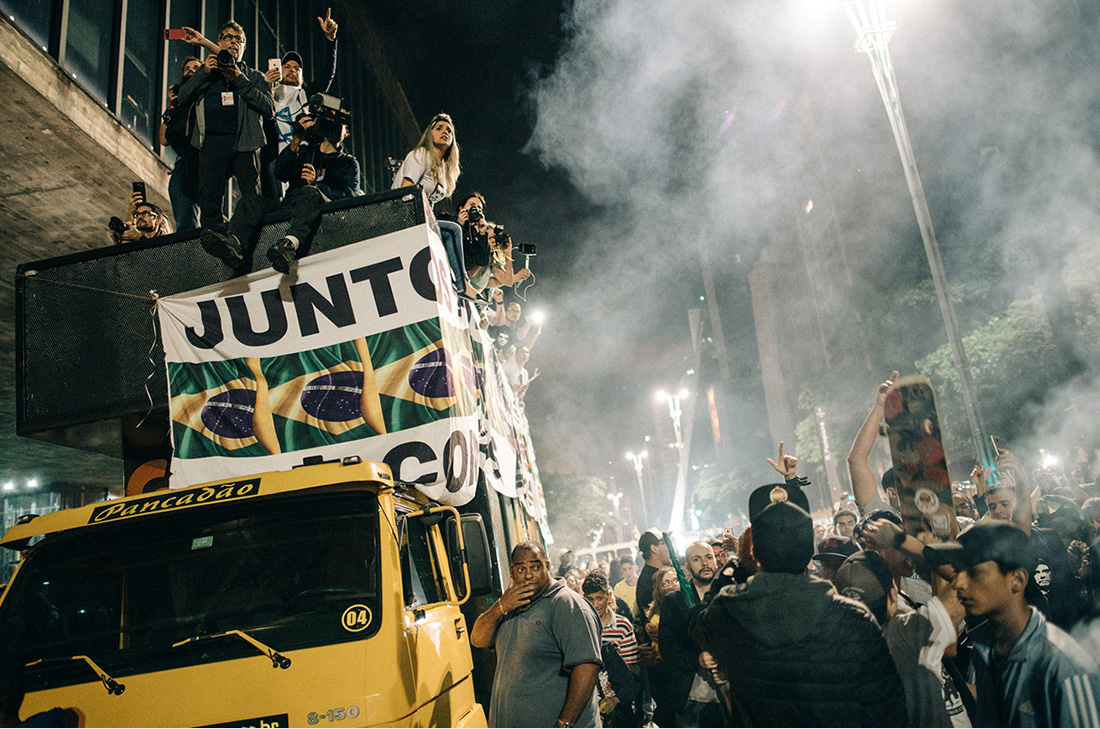
Last fall, I travelled to Brazil to
report from the presidential elections.
On Sunday 28th of October, I was in São Paulo when the final result was announced. Downtown Sao Paulo is a place I love to photograph. It’s a place of concrete and grey-toned skyscrapers, slightly decadent. I call it the Tropical Gotham. By 5:00 pm, I made my way down to Avenida Paulista which is the most important avenue in São Paulo, stretching 2.8 kilometers from northwest to southeast.
Paulista is somewhat of a special place; the headquarters of a large number of financial and cultural institutions are located here. As a symbol of the center of economic and political power of São Paulo, it has been the focal point of numerous political protests beginning in 1929. Quite logically, it’s where Brazilians had chosen to await the election’s result that evening.
By 7 pm the Avenue was packed
with Bolsonaro’s supporters:
young folks, old folks and families.
A multigenerational crowd raising Brazilian flags and chanting the name of their leader. From an external point of view, one could think he was looking at football fans celebrating Brazil’s victory at the World Cup Final. But the reality was far different from the analogy. Bolsonaro, a brash far-right congressman who has waxed nostalgic for Brazil's old military dictatorship and embraced a chance for radical change after years of turmoil, was on the verge of winning the presidency of Latin America's largest nation.
This of course did not please everyone. Soon after the result was announced, a group of left wing supporters turned-up on Paulista to express their discontent and began calling for a flight. Protests in Brazil can become violent, especially when the military police comes into play. They are known for there repressive methods and are greatly feared by protestors.
I found myself in the middle of the clash and instinctively started shooting.
I set my camera at ISO 3200 to gain in speed and navigated with the 24mm between F2.8 and F4
I was quickly impressed how well the lens was reacting and managed to get a couple of decent shots while panic spread within the crowd. The military police swiftly gained control of the situation, pushing back the hostile individuals. Within twenty minutes, they had managed to surround and secure the supporters of Jair Bolsonaro who could go on with their celebration. I took a couple more shots and gradually made my way out of the crowd to get a taxi. I had mixed feelings after that evening. On the one hand, I was overall satisfied with the pictures I had taken and the lens which had proven its ability to do its job. On the other, I felt underwhelmed by Brazil’s choice of new president. It seemed to me that only dark times lay ahead…
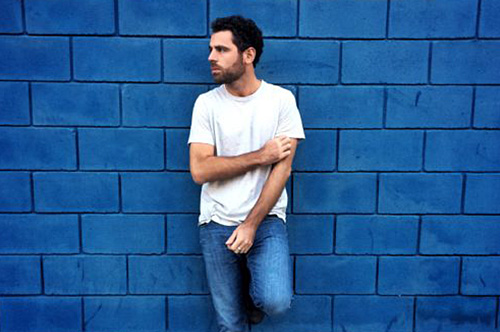
Jeremy Suyker (b.1985) is a French documentary photographer and reporter specialized in sociocultural and contemporary issues. He engaged his career in 2011 to report on the aftermath of the Sri Lankan civil war. The following year he embarked for Myanmar where historical political changes were occurring. Jeremy travels to Iran since 2013, documenting the country’s rich culture and history. The Persian Factory, his piece on Tehran’s underground art scene, has been published worldwide. Parallel to his journalistic engagements, he is pursuing personal projects around the Black Sea region, Central Asia and Istanbul. His works can be found in The National Geographic, The Sunday Times Magazine, GEO, Newsweek Japan, The Washington Post, Stern, Der Spiegel, Internazionale, Le Figaro Magazine, L’Equipe Magazine, Slate and 6Mois.
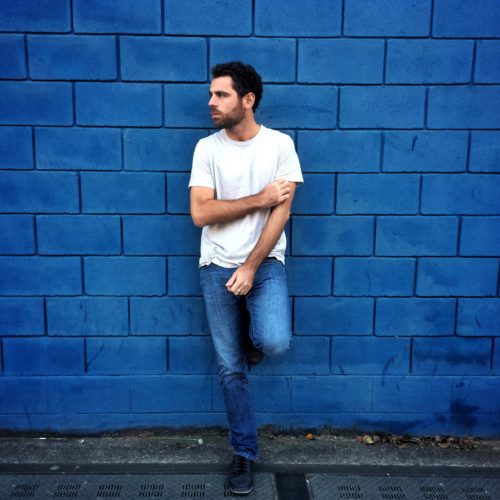
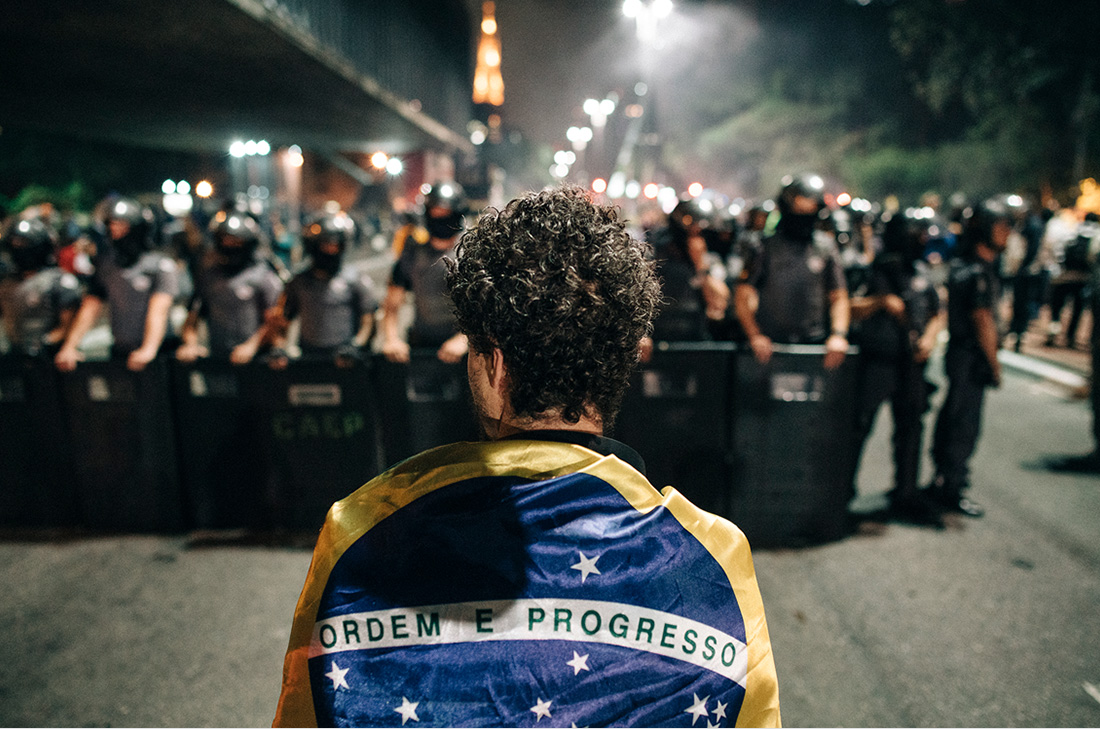
 MF 24mm F1.4
MF 24mm F1.4
 SONY
SONY
 F1.0
F1.0
 1/125 sec
1/125 sec
 3200
3200
 Multi-Segment
Multi-Segment
 -
-
 -
-
 -
-
 MF 24mm F1.4
MF 24mm F1.4
 SONY
SONY
 F1.0
F1.0
 1/125 sec
1/125 sec
 3200
3200
 Multi-Segment
Multi-Segment
 -
-
 -
-
 -
-
